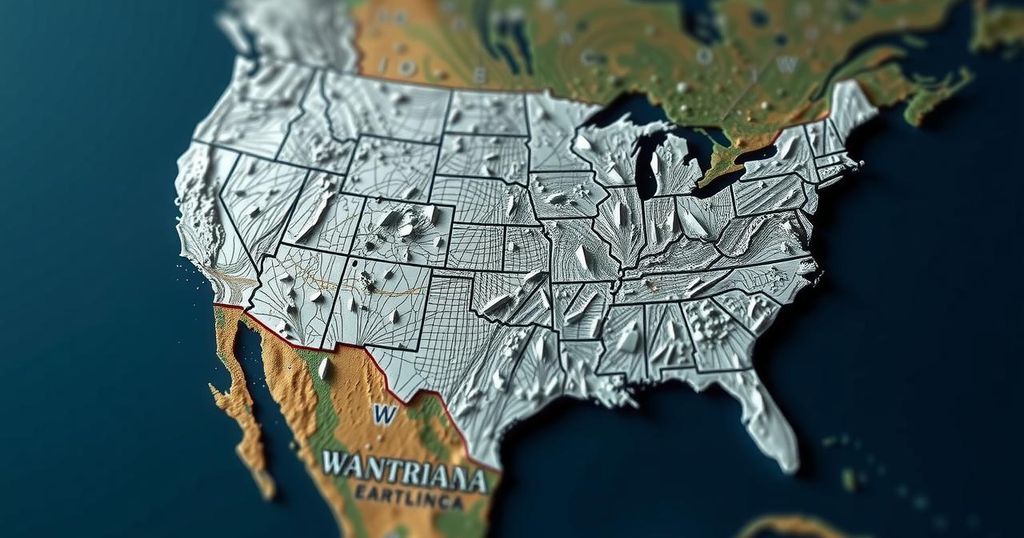A 4.4-magnitude earthquake occurred in Borrego Springs, California, on November 7, among a series of global seismic events including tremors in Greece, Hawaii, Missouri, and Chile during early November. The depth of this California quake was reported at 9.8 kilometers, with a substantial number of reports from locals feeling the tremors.
On November 7, a 4.4-magnitude earthquake struck California, as reported by the United States Geological Survey (USGS). The epicenter was located in Borrego Springs at a depth of approximately 9.8 kilometers (6 miles), with 257 individuals reporting to have felt the tremors. This seismic activity follows the occurrence of various earthquakes globally, including a 4.4-magnitude earthquake in Greece and a series of other moderate earthquakes in Hawaii, Missouri, and Chile in close succession. Just two days prior to California’s quake, Greece experienced a 4.4-magnitude earthquake centered in Chalandrítsa at a depth of 82.3 kilometers (about 51.1 miles). On the same day, a 4.8-magnitude earthquake was detected in Pāhala, Hawaii, which reached a depth of 38.4 kilometers (the equivalent of roughly 23.9 miles). Earlier that week, on November 4, California recorded a 3.3-magnitude event near Anza, located at a depth of 12.1 kilometers (about 7.5 miles). The seismic activity on November 4 coincided with a 4.3-magnitude earthquake recorded in La Serena, Chile, which occurred at a depth of 46.1 kilometers (roughly 28.65 miles) on the same Sunday. Furthermore, on the same day, Missouri reported a 3.7-magnitude earthquake in Steele at a depth of about 10.5 kilometers (6.5 miles). The earthquakes in these regions are linked, following as they do the occurrence of a significant 5.3-magnitude earthquake in Greece earlier that Sunday. This sequence of earthquakes is framed within a larger context of seismic activity, including a 6.0-magnitude earthquake in Oregon that occurred last week on October 30, centered in Windsor at a depth of 10 kilometers (approximately 6.2 miles). This event followed a 3.2-magnitude earthquake also located in Windsor, which occurred earlier in the same day. The seismic history of California leading up to recent events includes multiple earthquakes of varying magnitudes throughout October. These instances included quakes in Lompoc, where two 3.2-magnitude earthquakes surfaced in short succession on October 28, and a 4.1-magnitude earthquake near Petrolia on October 24. The region continues to experience mild to moderate seismic fluctuations, prompting ongoing monitoring by geological authorities.
Earthquakes occur as a result of tectonic plate movements, which can shift and release stress, leading to seismic activity. The United States frequently experiences such events, particularly in fitful regions of California due to its geographical positioning along fault lines. The earthquakes mentioned in this report reflect a pattern of activity across several states and nations, indicative of both localized geological features and broader tectonic jostling that may also correlate with occurrences in remote locations.
In conclusion, the recent sequence of earthquakes highlights the ongoing seismic activity experienced in California and beyond. The 4.4-magnitude event in California on November 7, alongside significant quakes in Greece, Hawaii, and Chile, emphasizes the interconnected nature of geological phenomena. Continued monitoring and research into these earthquakes contribute to the understanding of seismic patterns and potential risks in affected areas.
Original Source: 1190kex.iheart.com






